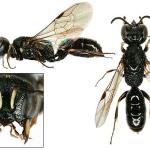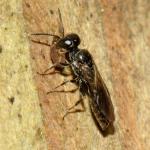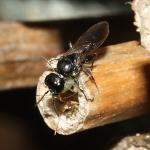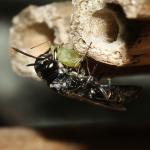Passaloecus brevicornis MORAWITZ 1864; Passaloecus insignis MISIDENT.; Passaloecus turionum MISIDENT.; Passaloecus roettgeni VERHÖFF 1890; Passaloecus shuckardi YASUMATSU 1934
An Holartic species, although probably introduced to North America. It is widely distributed in Europe, but scarcer in the north (Lomholdt 1975-76). A key to European species groups of the genus Passaloecus is given by Merisuo (1974).
Cornwall to Kent, and north to southern Cumberland and Yorkshire. Also recoded from Jersey.
This species is not regarded as being scarce or threatened.
Occurs in a variety of habitats, including suburban gardens.
Late May to late September, but particularly June to July.
Lachnidae and Aphididae (Homoptera) (Lomholdt 1975-76).
The females nest in dry, hollow plant stems and abandoned beetle burrows in old timber; also in the galls of Andricus kollari on oak (Lomholdt 1975-76) but little more is known of the nesting biology.
None known for this species, although it may take honeydew.
On mainland Europe, the chrysidid wasps Omalus aeneus and Trichrysis cyanea are recorded as cleptoparasites or parasitoids. Eurytoma nodularis (Hymenoptera, Chalcidoidea) is a parasitoid (Lomholdt 1975-76).
2002





